Abstract
Computations are presented of the input impedance of assemblies of randomly bifurcating elastic tubes, as a generalized model of the arterial system. Account is taken of the viscosity of the fluid, the viscoelastic properties of the walls, the variation of elasticity in the different orders of branches, and the variation in cross-sectional area at the bifurcations. The results show that the distributed and scattered nature of the terminations of such an assembly greatly reduces the influence of reflections upon the behavior of the input impedance. The variation of impedance with frequency is very similar in form to that found in animal experiments for the input impedance of the aorta. The architecture of the arterial system may thus be considered to play an important part in determining the favorably low impedance presented to the heart by the aorta.
Full text
PDF
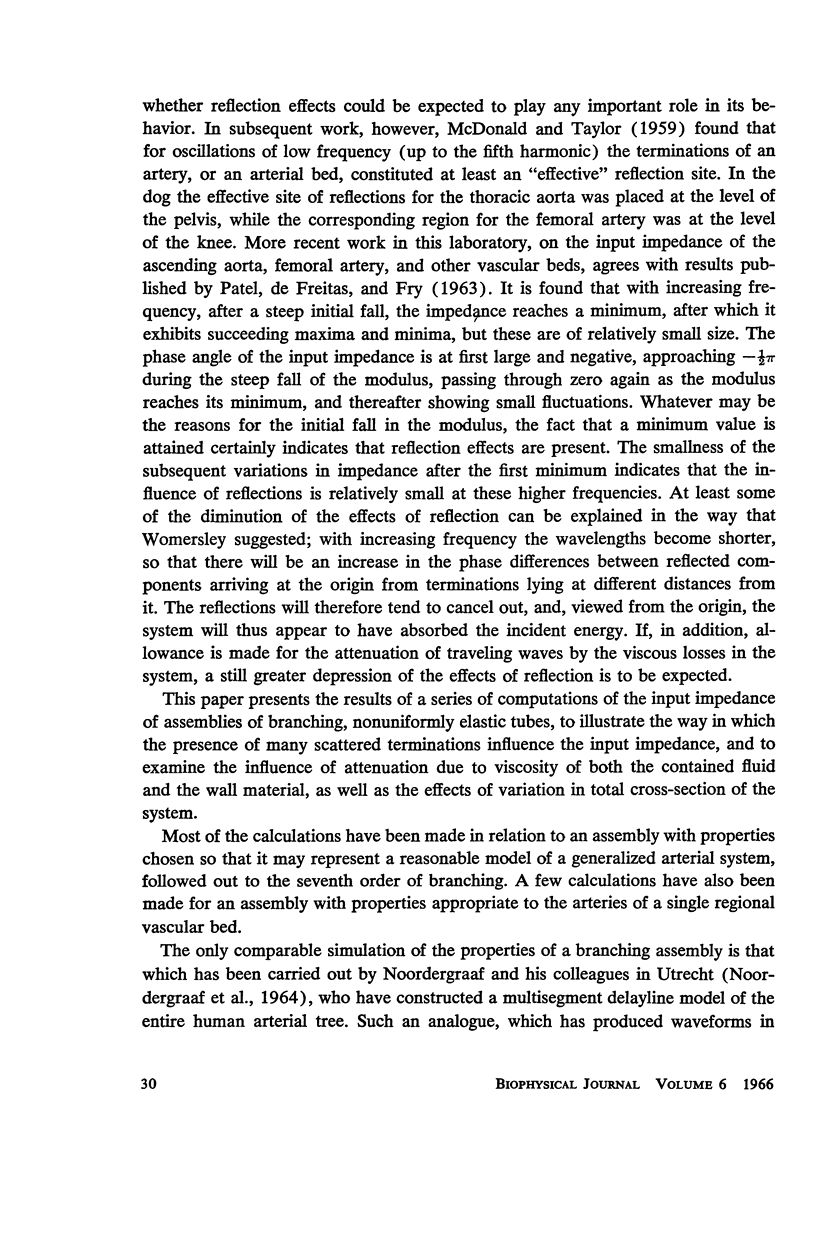
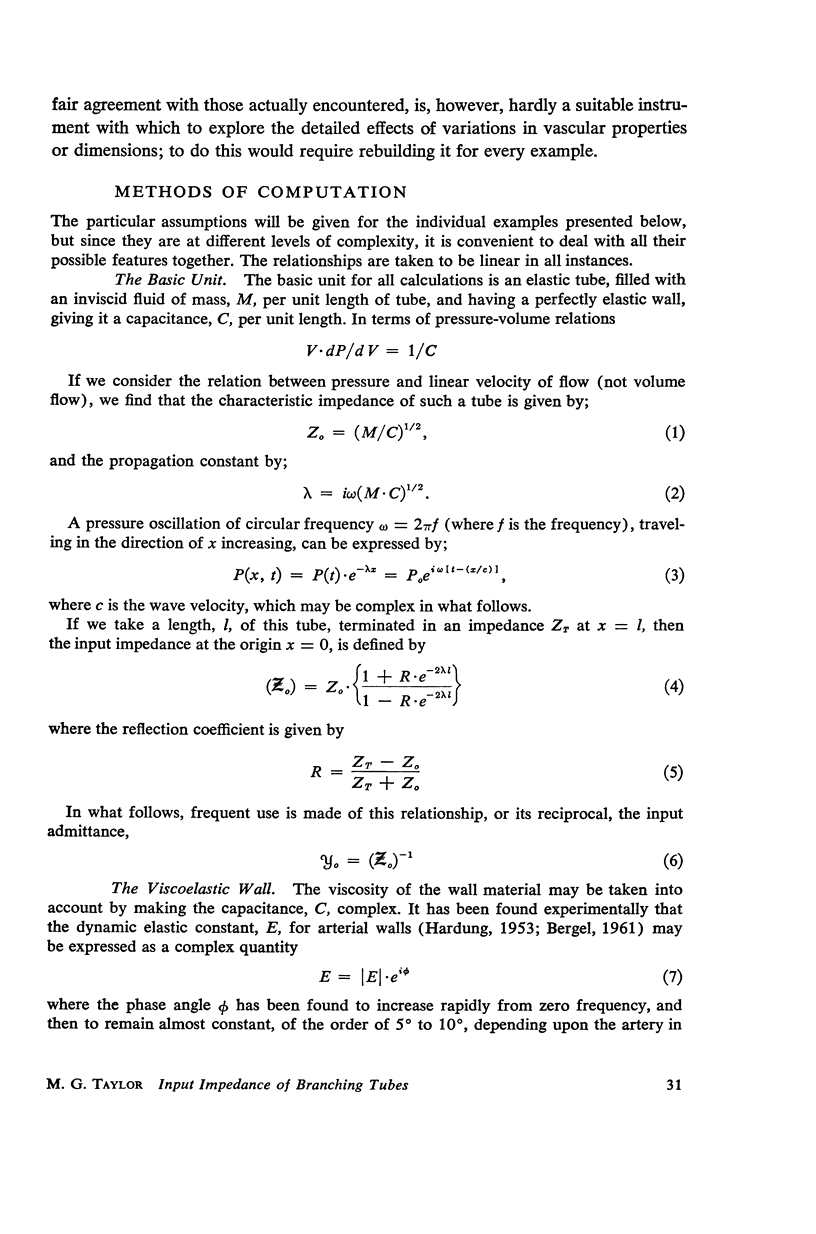
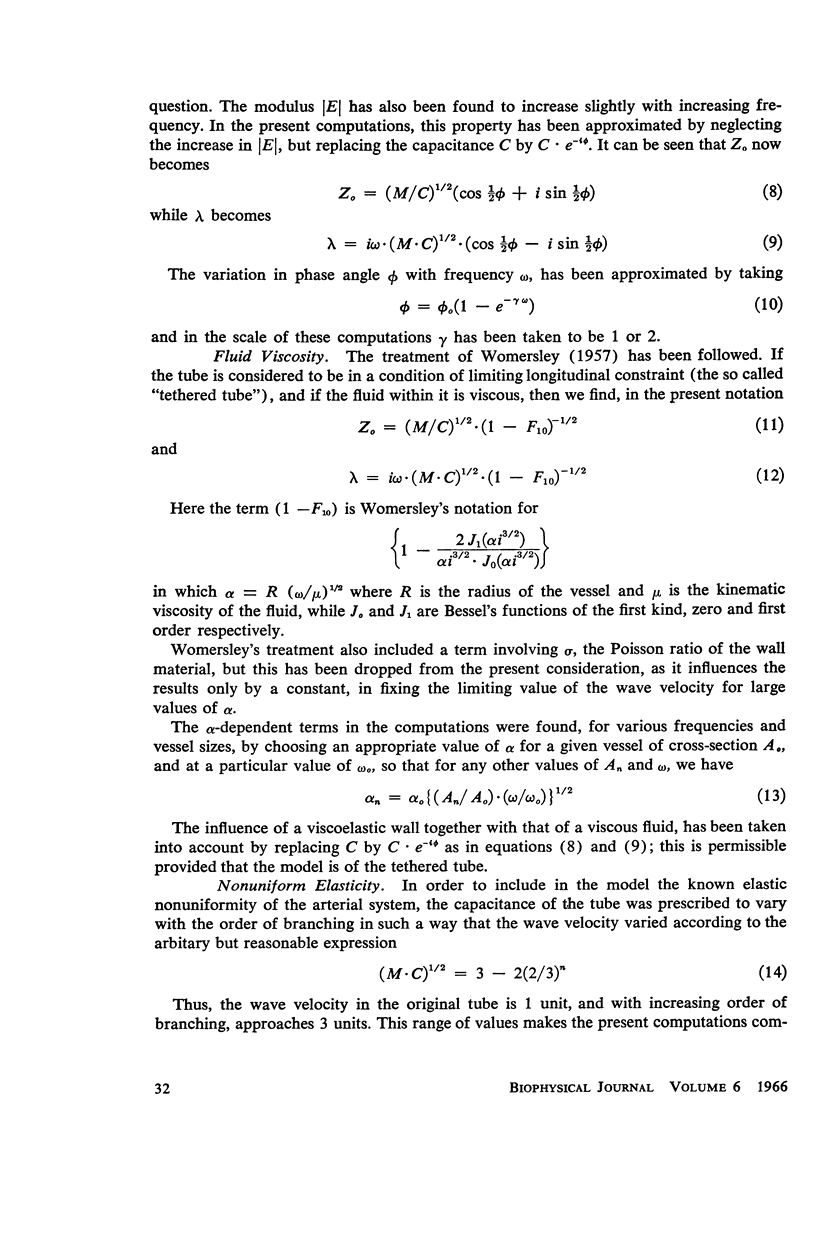
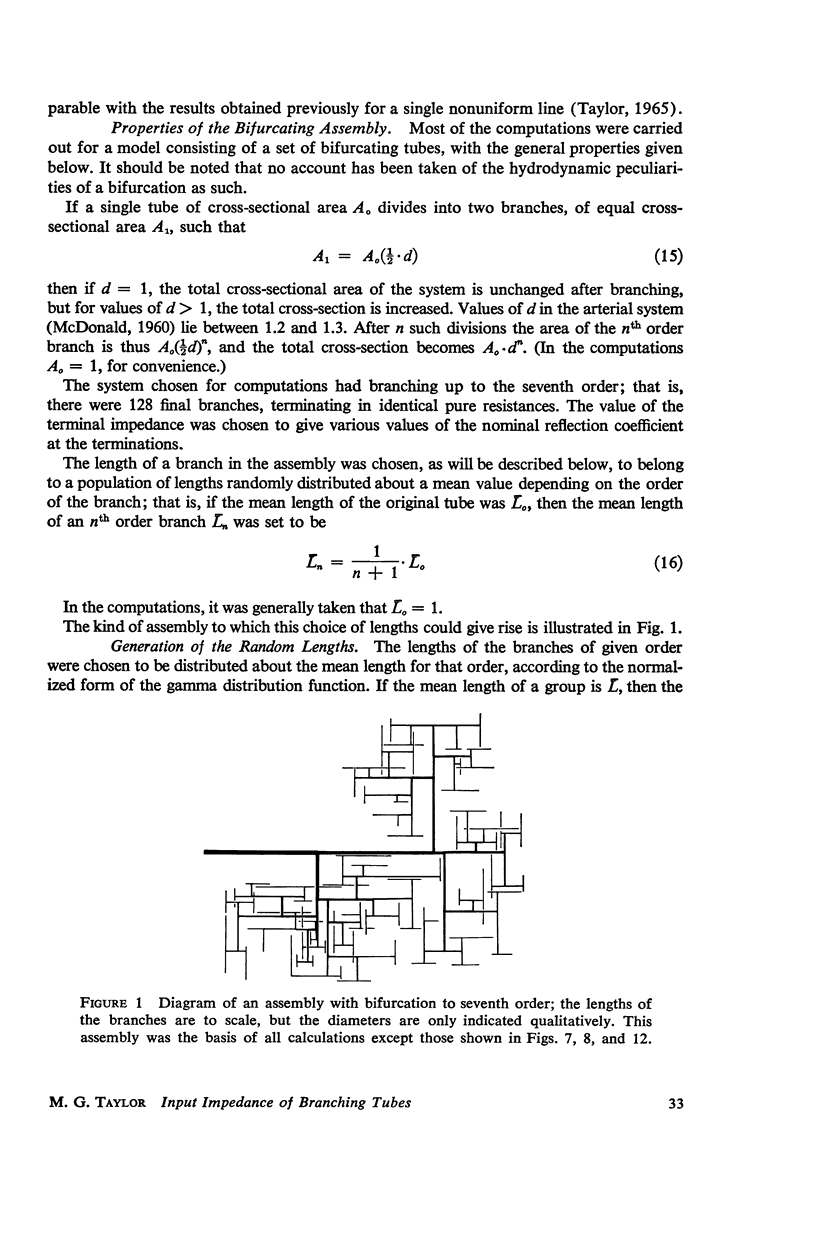
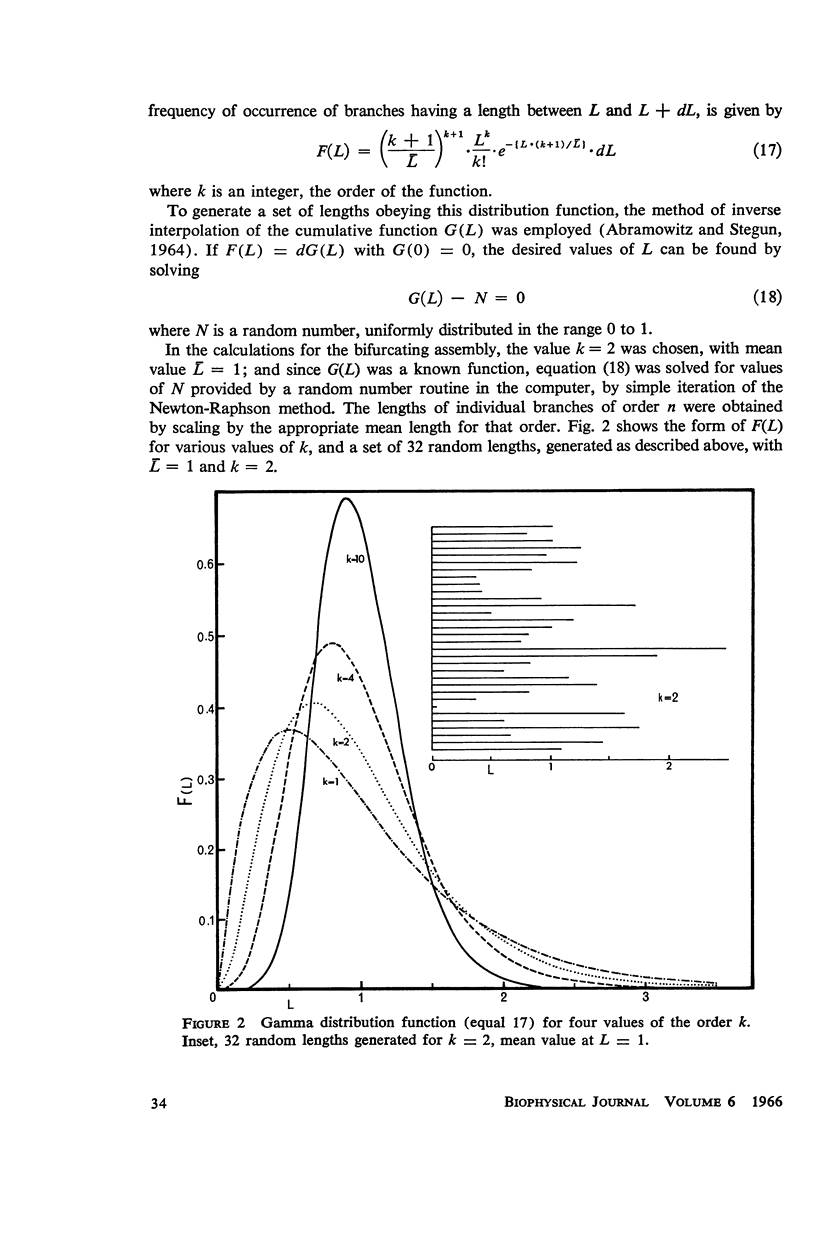
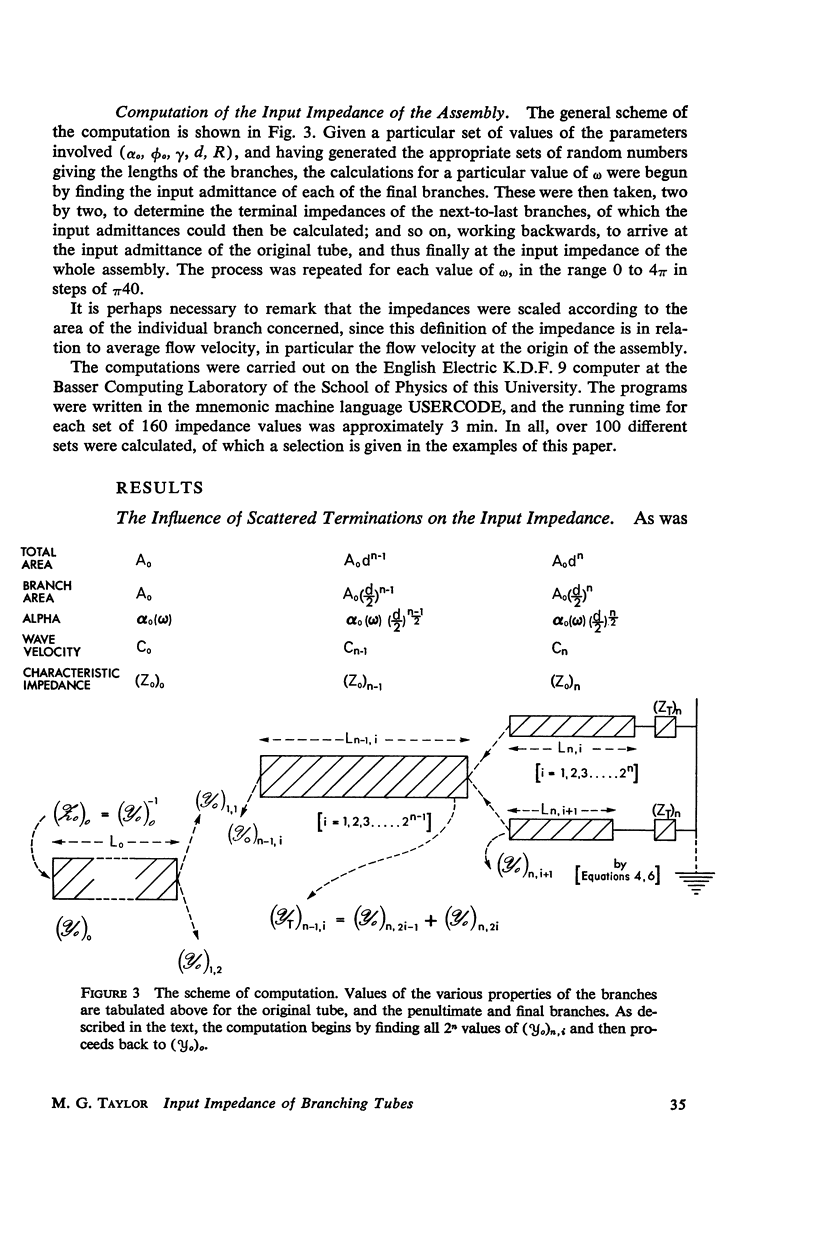
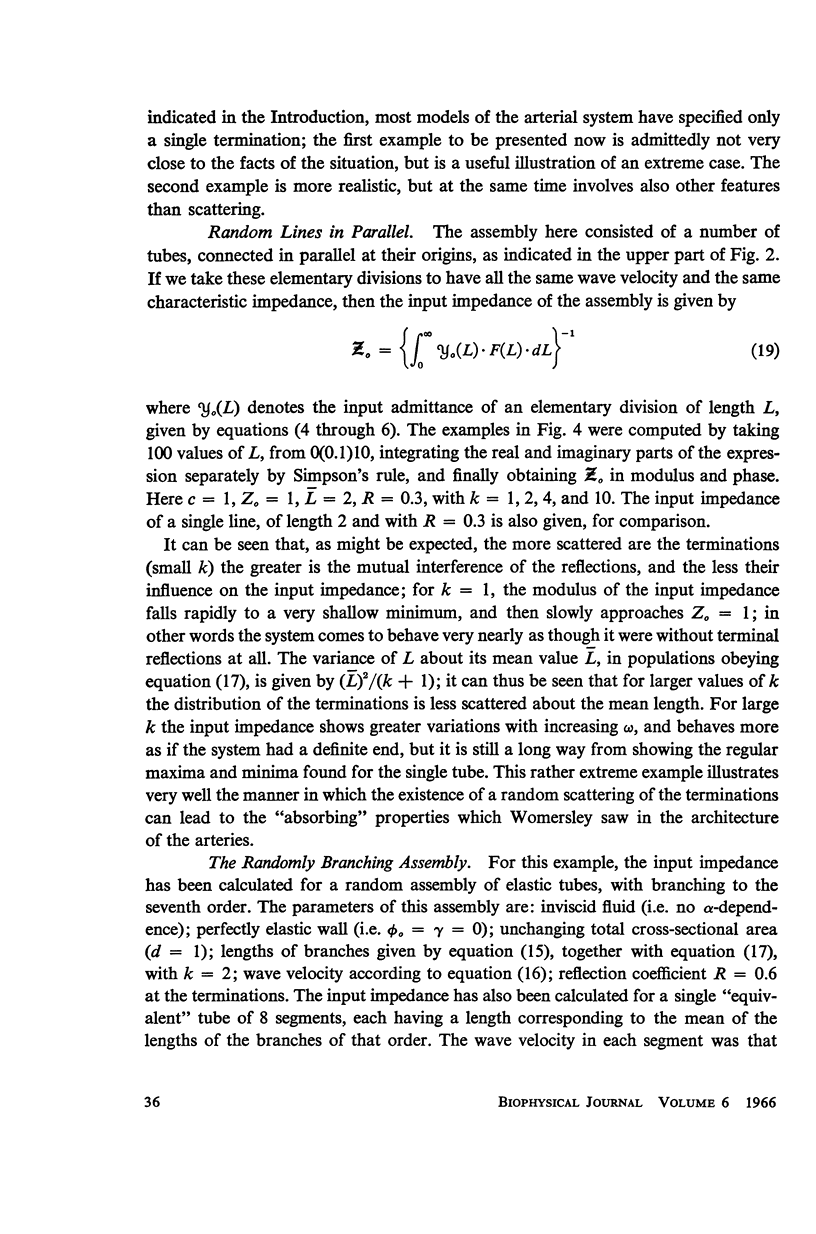
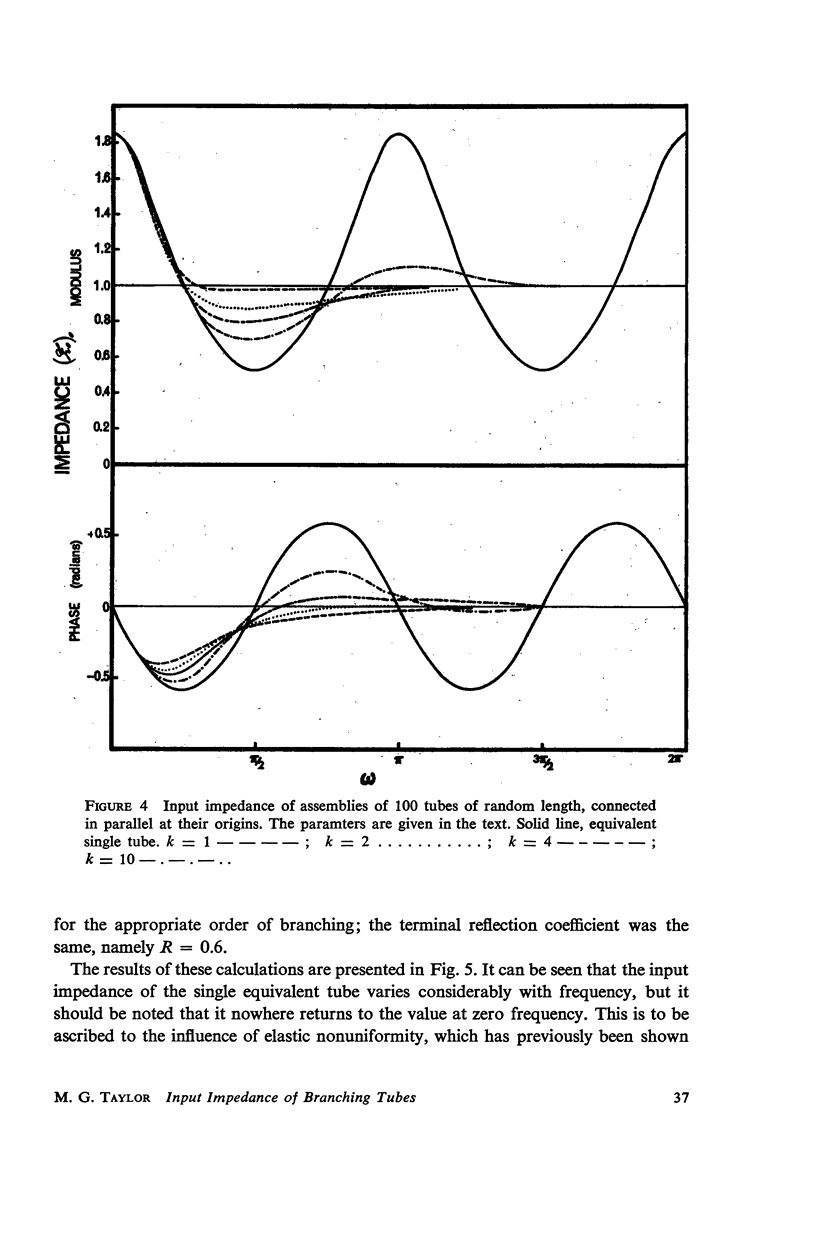
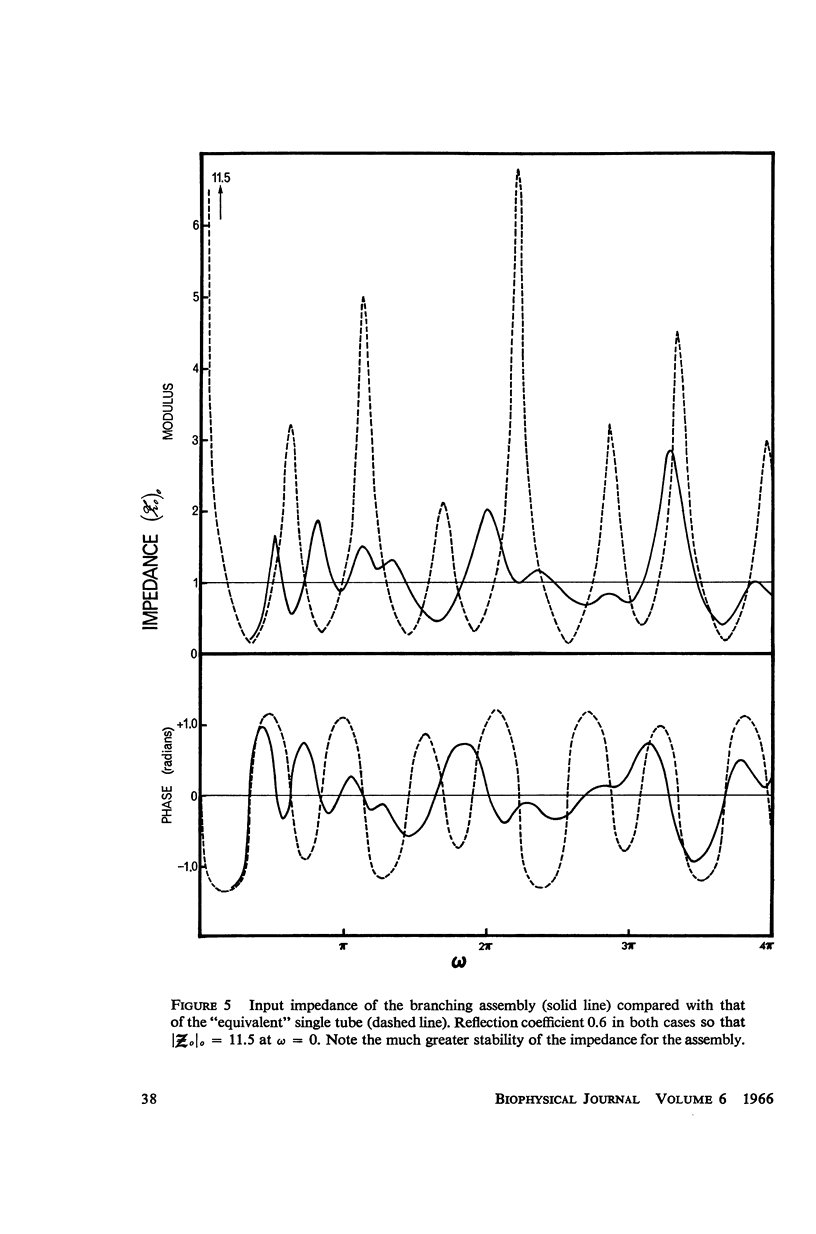
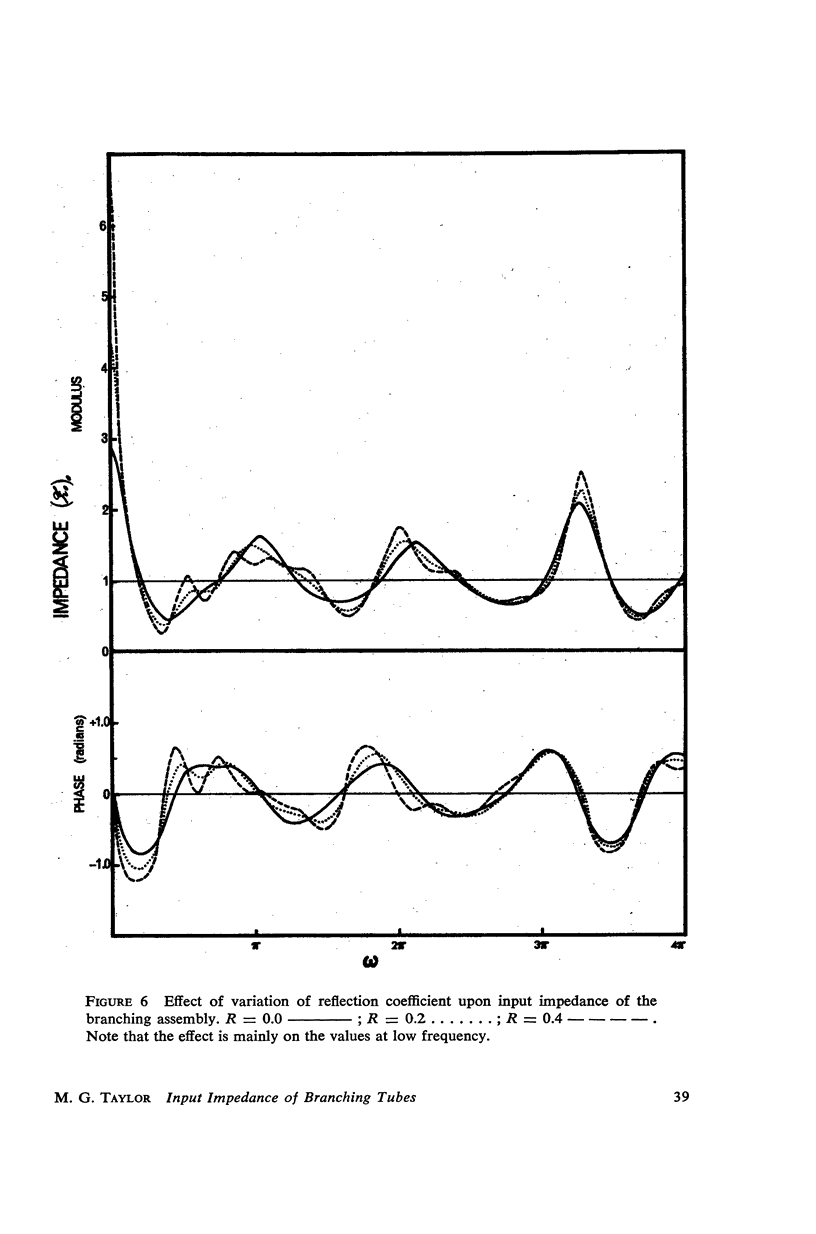
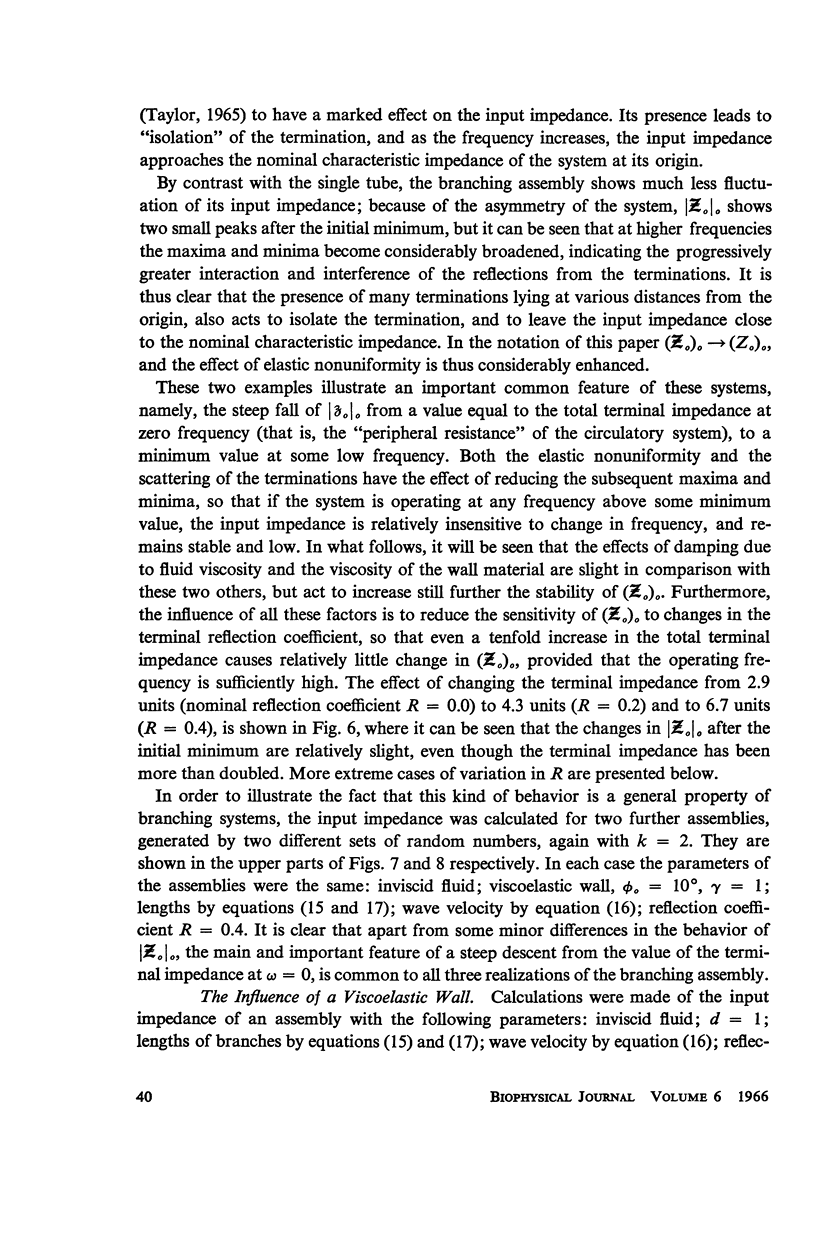
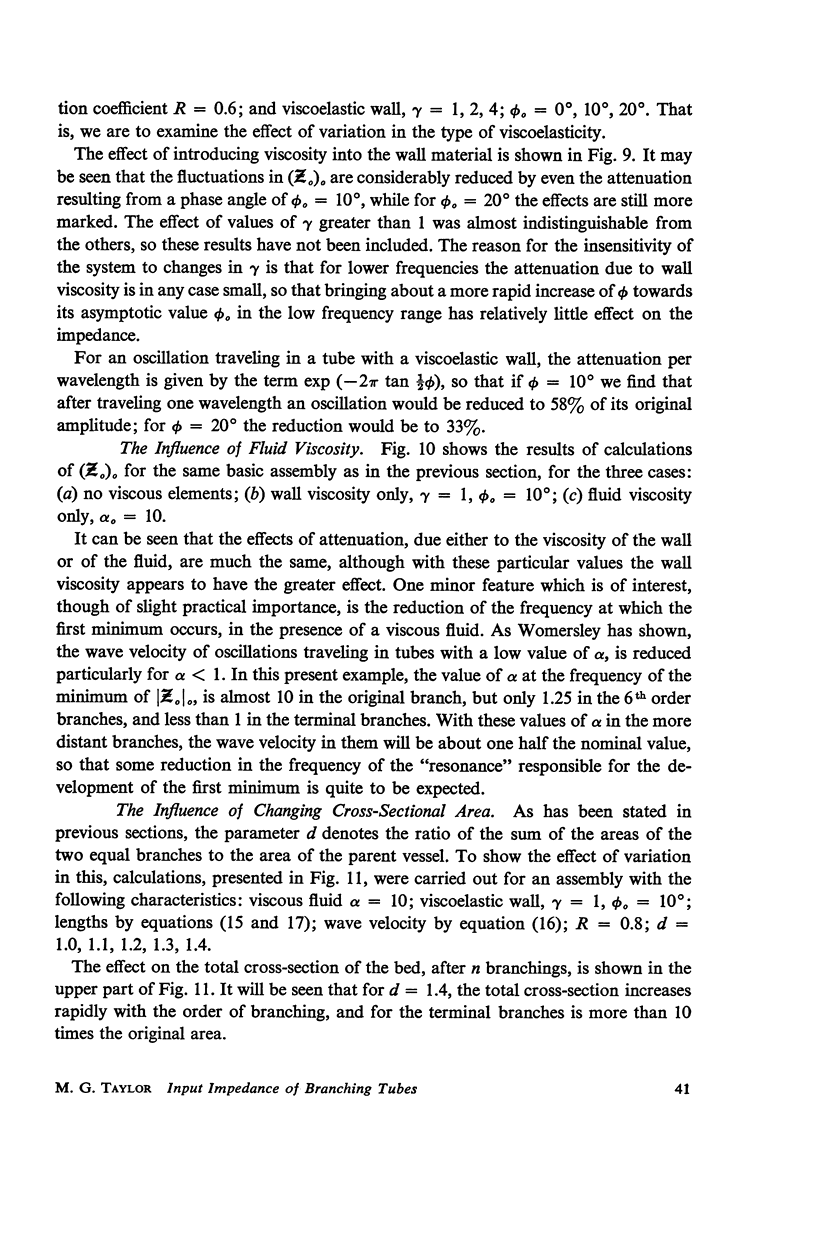
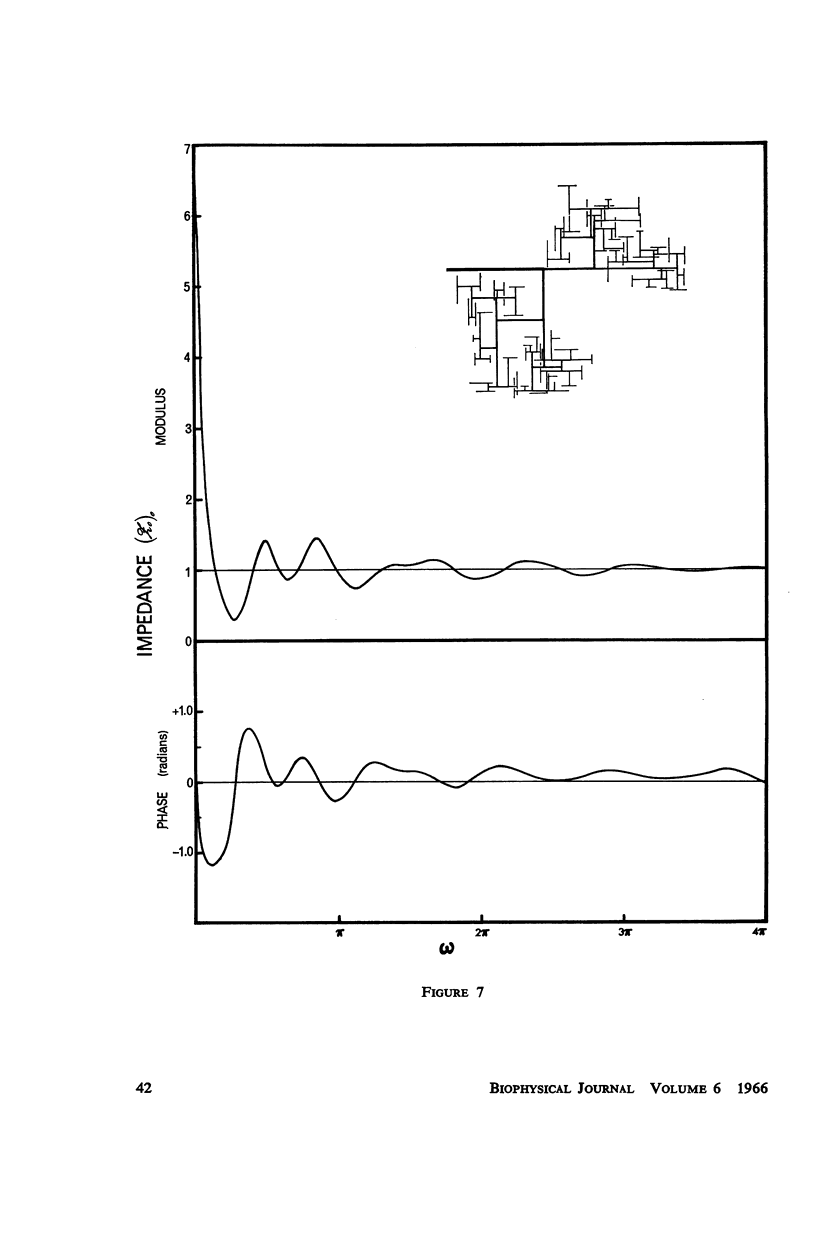
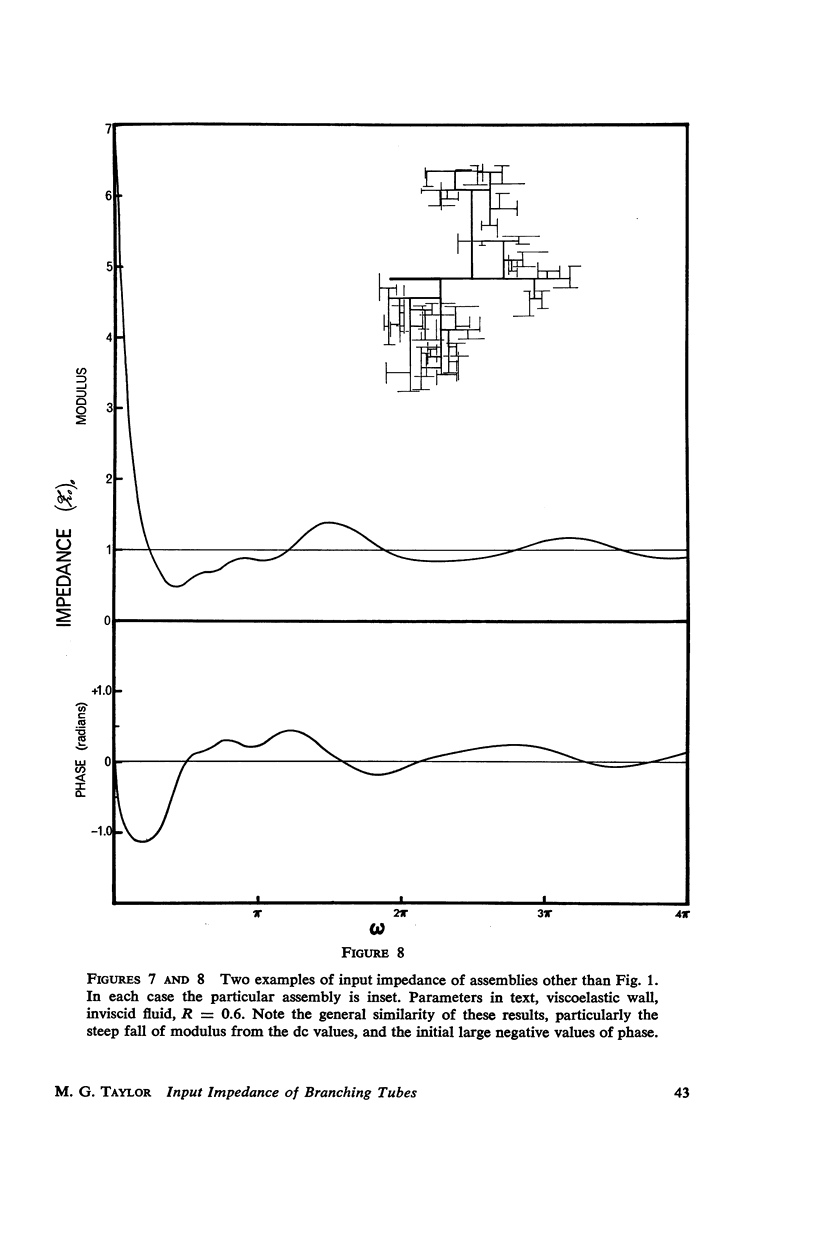
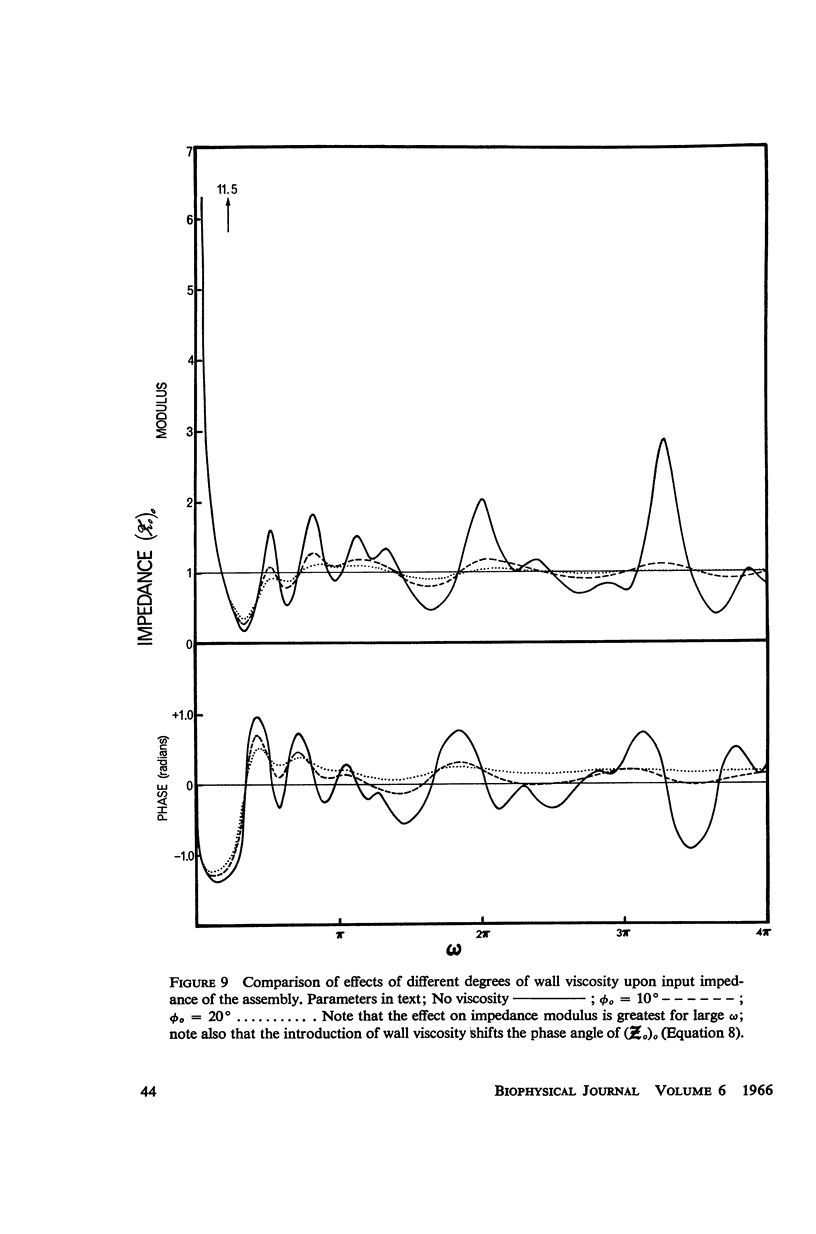
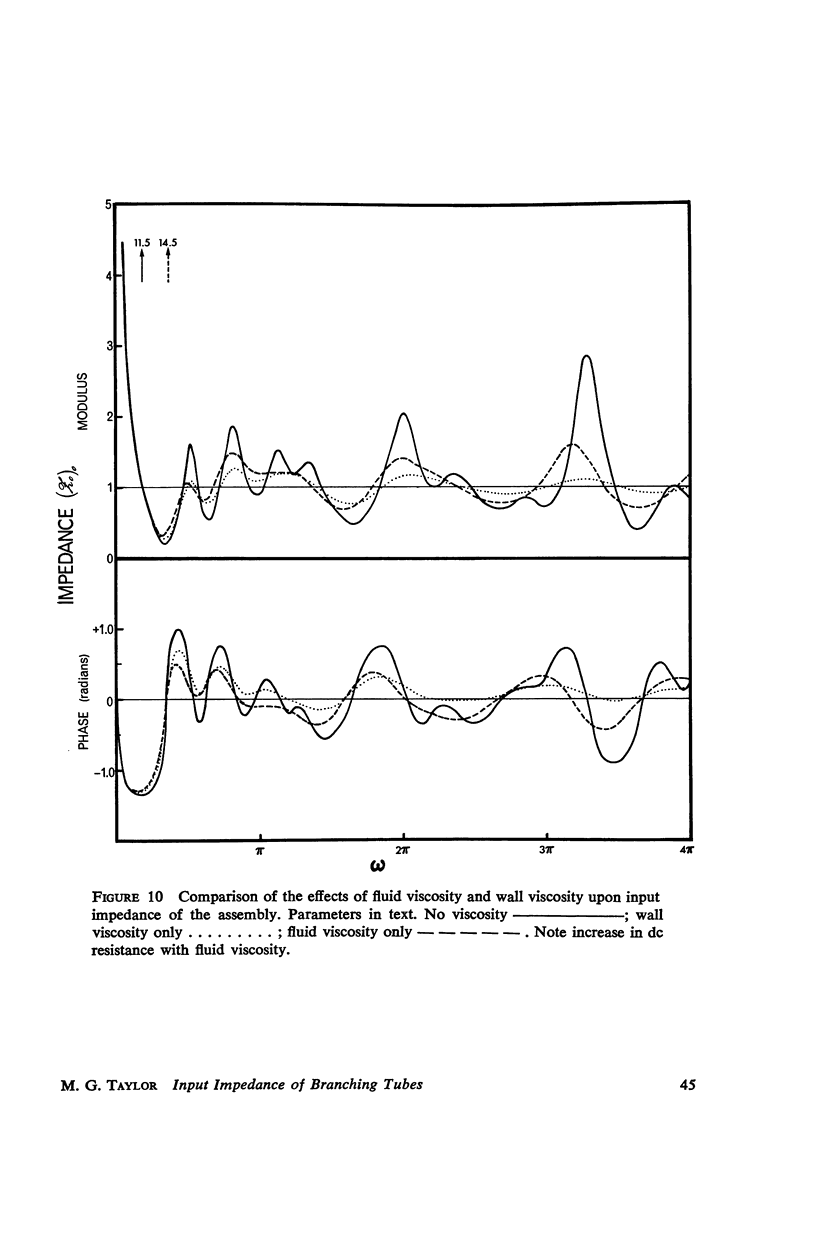
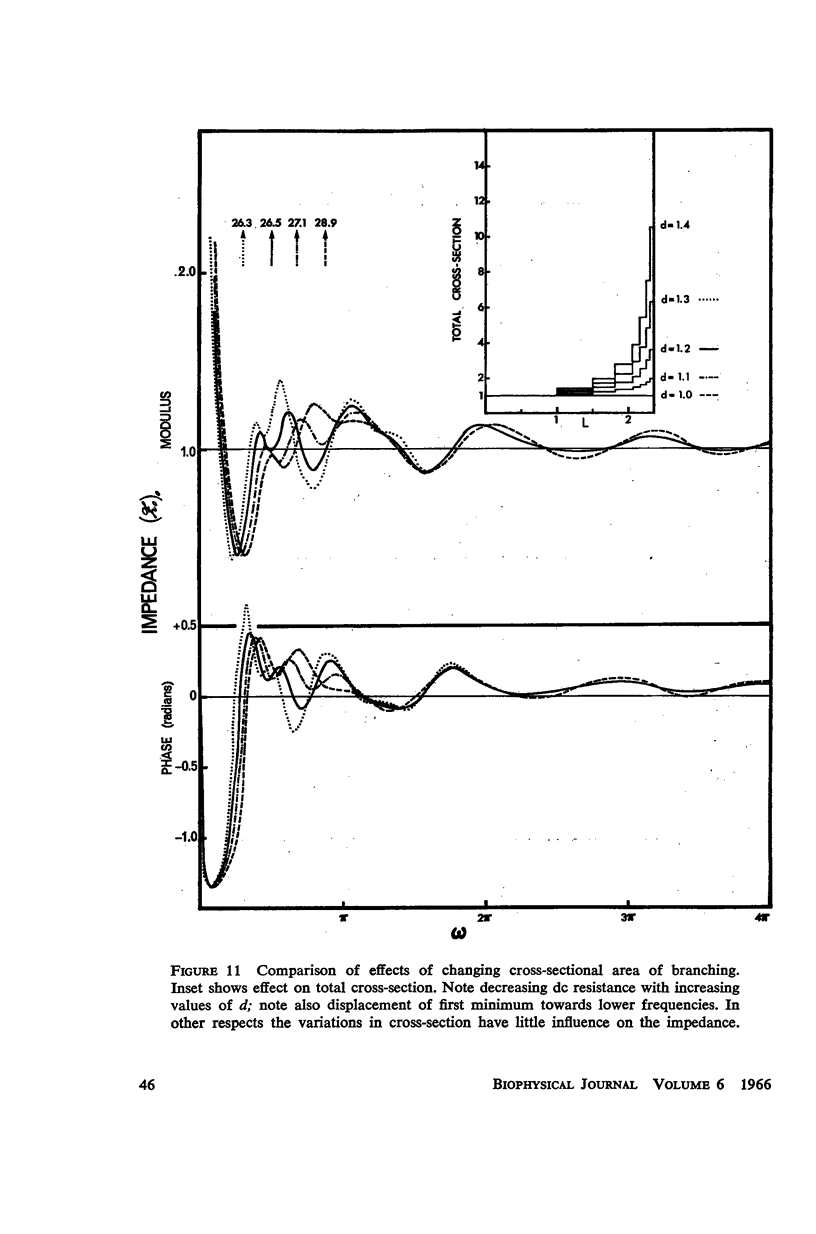
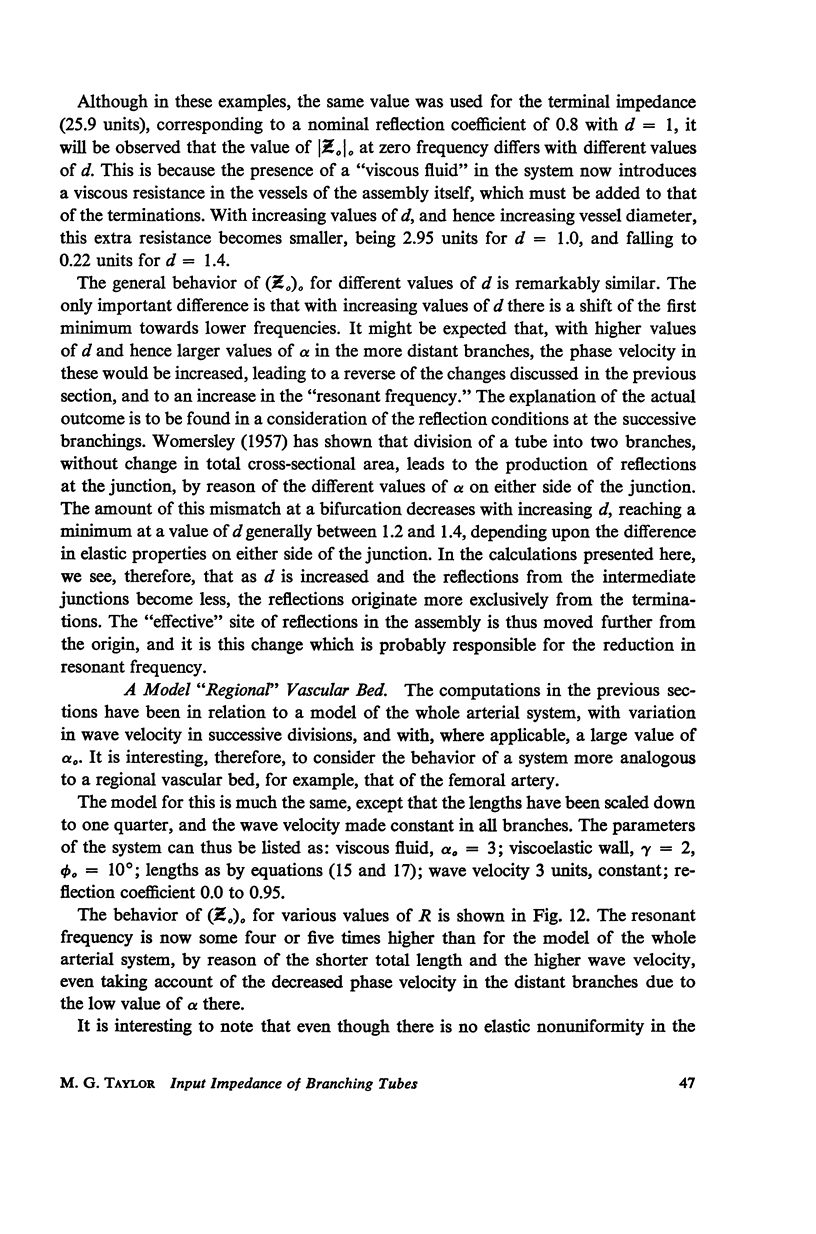
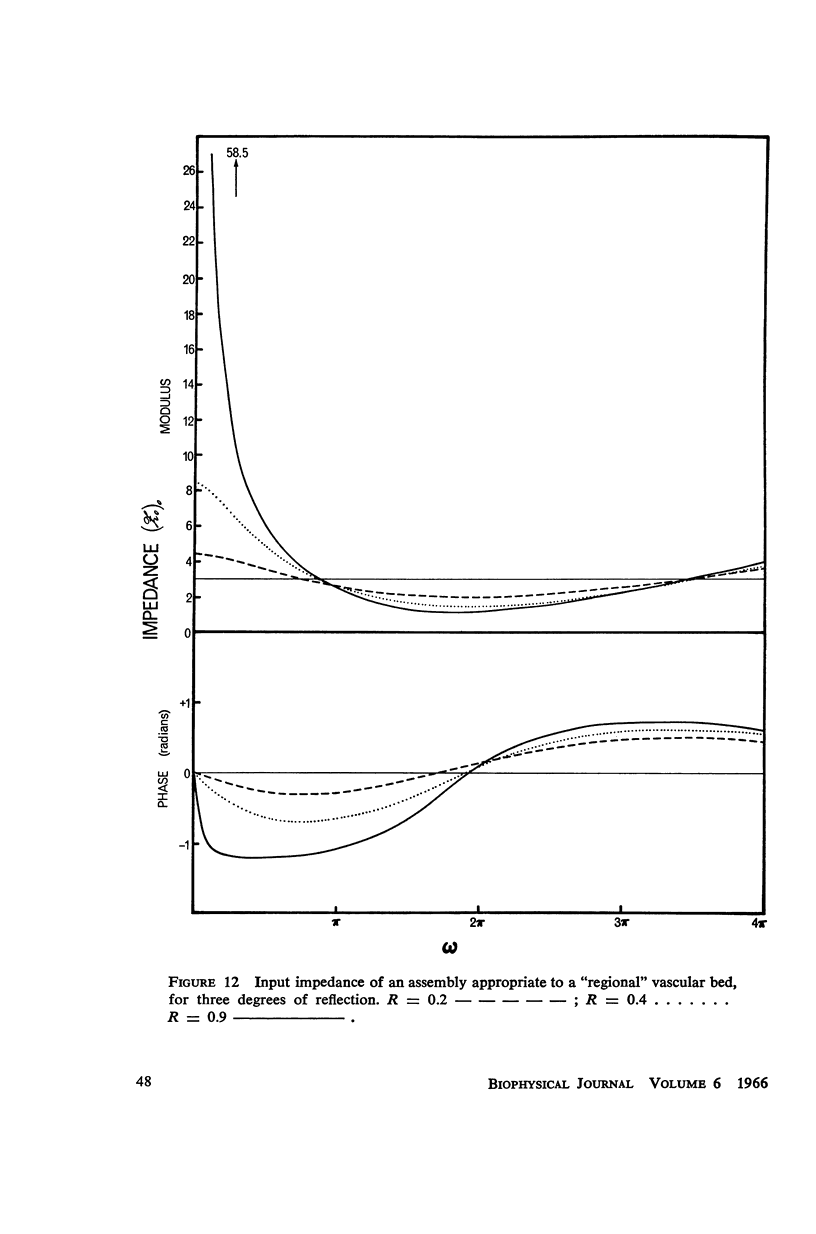
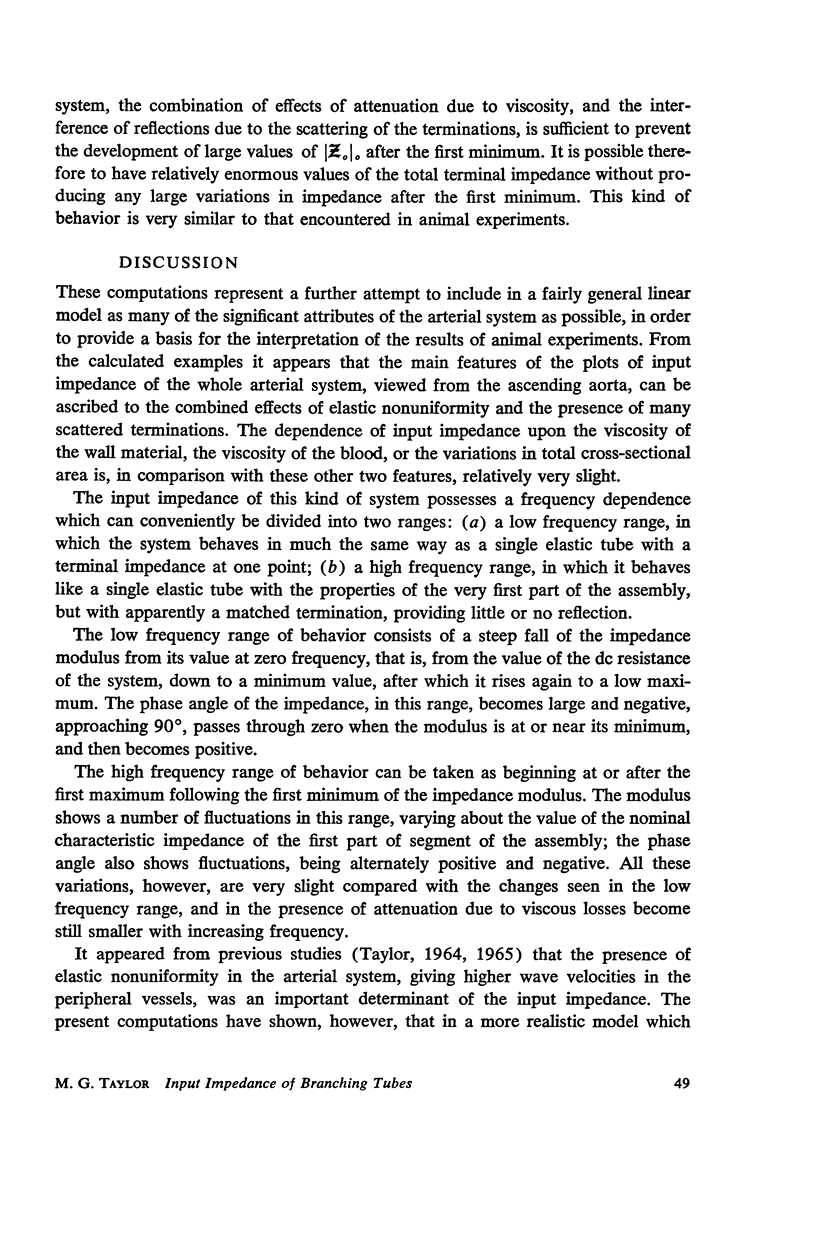
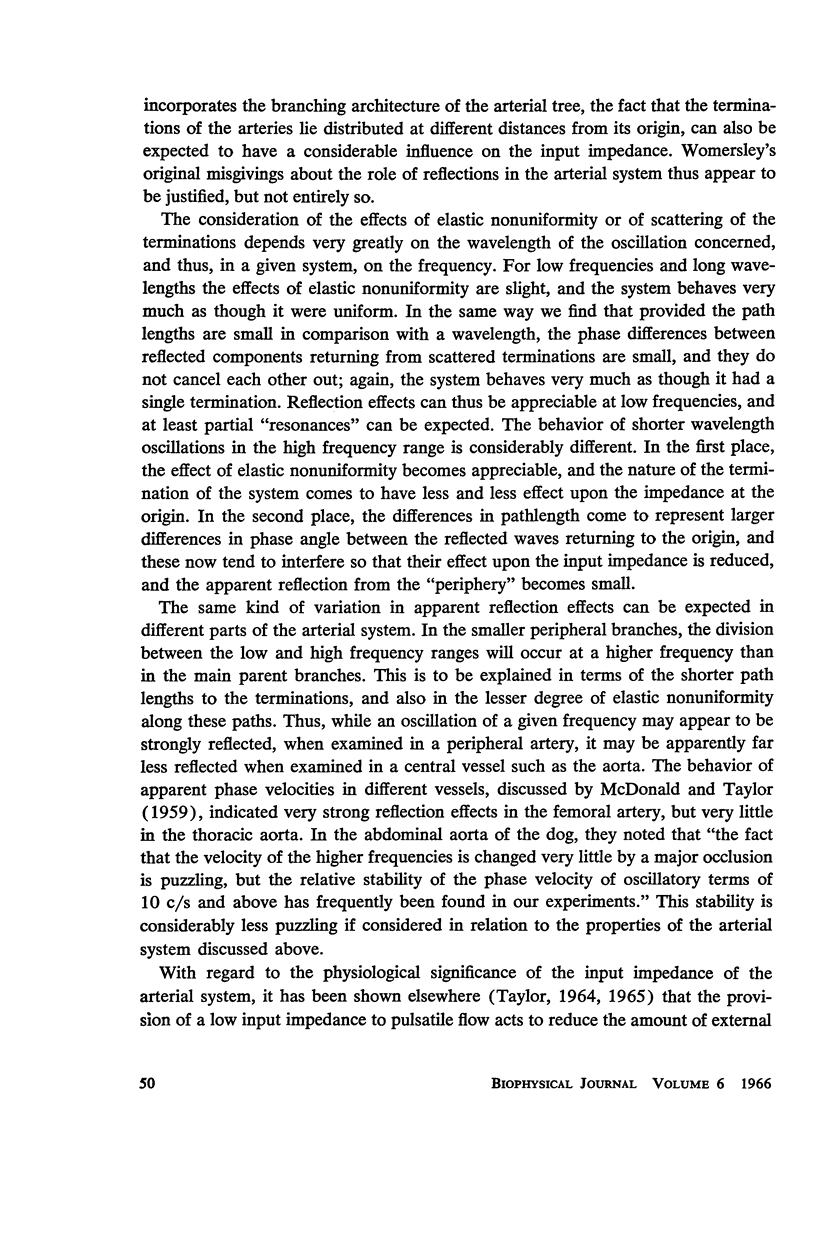
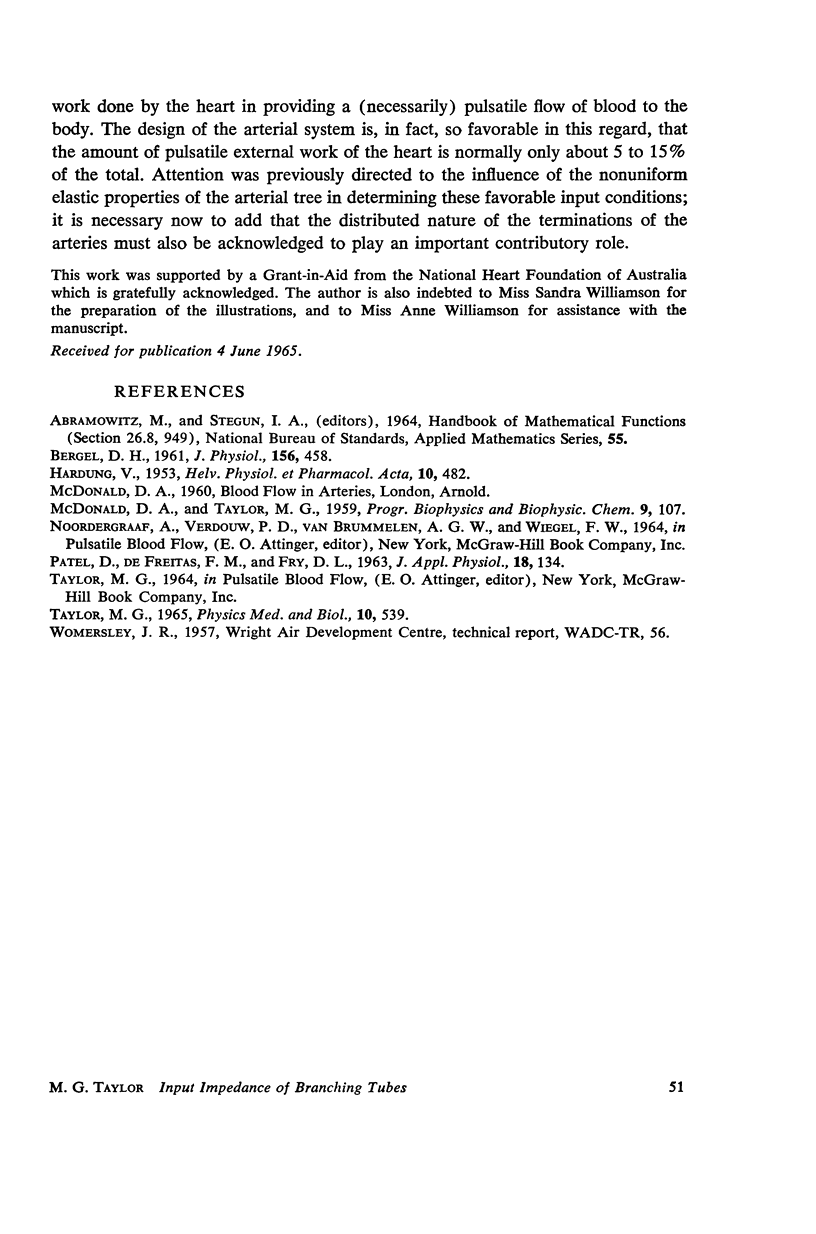
Selected References
These references are in PubMed. This may not be the complete list of references from this article.
- Bergel D. H. The dynamic elastic properties of the arterial wall. J Physiol. 1961 May;156(3):458–469. doi: 10.1113/jphysiol.1961.sp006687. [DOI] [PMC free article] [PubMed] [Google Scholar]
- HARDUNG V. über eine Methode zur Messung der dynamischen Elastizität und Viskosität kautschukähnlicher Körper, insbesondere von Blutgefässen und anderen elastischen Gewebeteilen. Helv Physiol Pharmacol Acta. 1952;10(4):482–498. [PubMed] [Google Scholar]
- PATEL D. J., DEFREITAS F. M., FRY D. L. Hydraulic input impedance to aorta and pulmonary artery in dogs. J Appl Physiol. 1963 Jan;18:134–140. doi: 10.1152/jappl.1963.18.1.134. [DOI] [PubMed] [Google Scholar]


